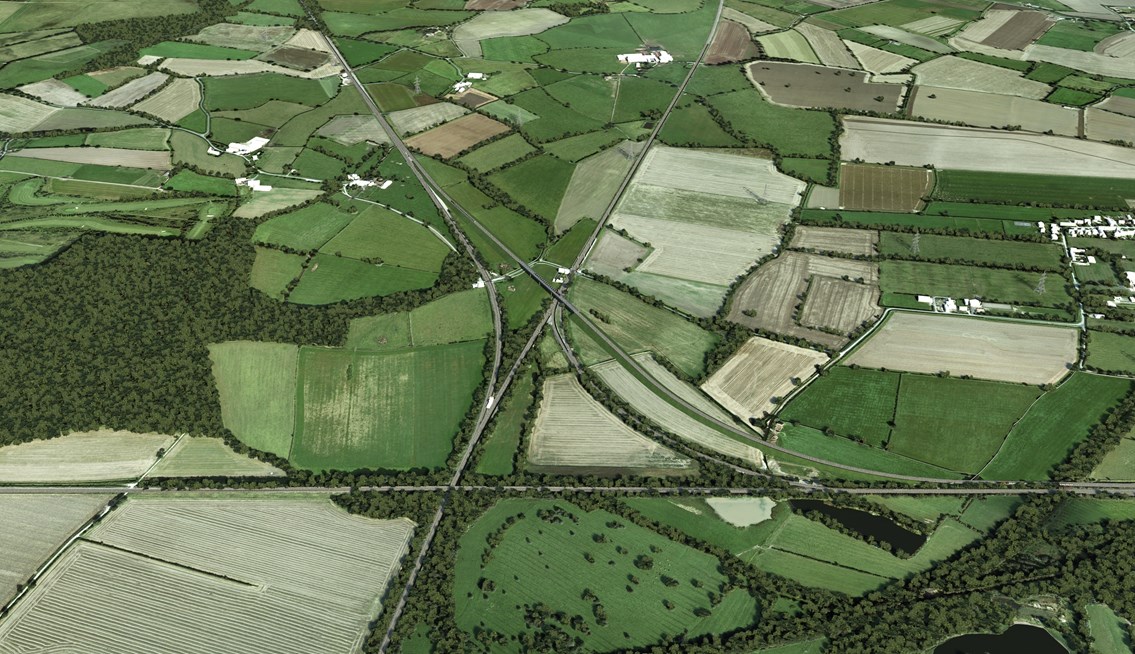Wednesday 13 Oct 2010
UPDATED PLANS TO DELIVER MORE TRAINS AND FASTER JOURNEYS ON DISPLAY IN DONCASTER
- Region & Route:
Updated plans to improve journeys for thousands of rail passengers using the East Coast main line (ECML) are on display in Askern this week. The plans, by Network Rail, look to separate freight trains from passenger services by building a flyover at Shaftholme Junction, to the north of Doncaster.
Following an initial consultation in July, Network Rail has reviewed the proposals and is once again giving people the opportunity to see what is planned and to have their say.
The main change to the plans is the inclusion of a road bridge over the East Coast main line at Joan Croft Lane. Concern about barrier down times at the level crossing was raised at the original consultation and this bridge should help to alleviate delays to road traffic.
Richard Lungmuss, route director for Network Rail, said “It was very encouraging that 80% of people who commented last time were supportive of our plans to invest in railway improvements which allow us to transport more freight. The real benefit is that this scheme will allow increased passenger numbers by separating the freight and passenger traffic.
“We want to update people on our thinking and also to feed back on other issues which were raised in the summer.”
The plans go on display on 10am to 6.30pm Thursday 21 October at Alexander House, High Street Askern, DN6 0AB.
At the moment freight trains, running between ports on the Humber to the Aire Valley power stations, have to run on the East Coast main line for up to 14 miles, slowing the passenger services which run between London and Scotland.
Notes to editors
The ECML is one of the busiest railway lines in Britain. It is a vital transport link between London, the North East and Scotland and serves many commuter and regional passengers. A number of constraints along the route need to be addressed in order to deliver a better railway in the future. These will help open up the line for additional trains, improve journey times, reduce delays and provide more reliable services for passengers and freight operators.
As well as tackling a crucial bottleneck on the line, this project is part of Network Rail’s vision for freight that will allow many of the increasing numbers of freight containers coming into Britain’s ports to be transported by rail. The alternative would be to take the containers by road, adding to traffic congestion. Taking freight by rail rather than by road reduces CO2 emissions by 74%, helping the UK to improve its carbon footprint.
Network Rail has to secure planning consent to complete the work. Feedback from the consultations will be fed into the planning documents – due to be submitted next year.
More information ion the project can be found at http://www.networkrail.co.uk/aspx/6797.aspx
Contact information
Passengers / community members
Network Rail national helpline
03457 11 41 41
Latest travel advice
Please visit National Rail Enquiries
Journalists
Network Rail press office -London North Eastern & East Midlands route
01904 383180
mediarelations@networkrail.co.uk
About Network Rail
We own, operate and develop Britain's railway infrastructure; that's 20,000 miles of track, 30,000 bridges, tunnels and viaducts and the thousands of signals, level crossings and stations. We run 20 of the UK's largest stations while all the others, over 2,500, are run by the country's train operating companies.
Usually, there are almost five million journeys made in the UK and over 600 freight trains run on the network. People depend on Britain's railway for their daily commute, to visit friends and loved ones and to get them home safe every day. Our role is to deliver a safe and reliable railway, so we carefully manage and deliver thousands of projects every year that form part of the multi-billion pound Railway Upgrade Plan, to grow and expand the nation's railway network to respond to the tremendous growth and demand the railway has experienced - a doubling of passenger journeys over the past 20 years.
Follow us on Twitter: @networkrail
Visit our online newsroom: www.networkrailmediacentre.co.uk

